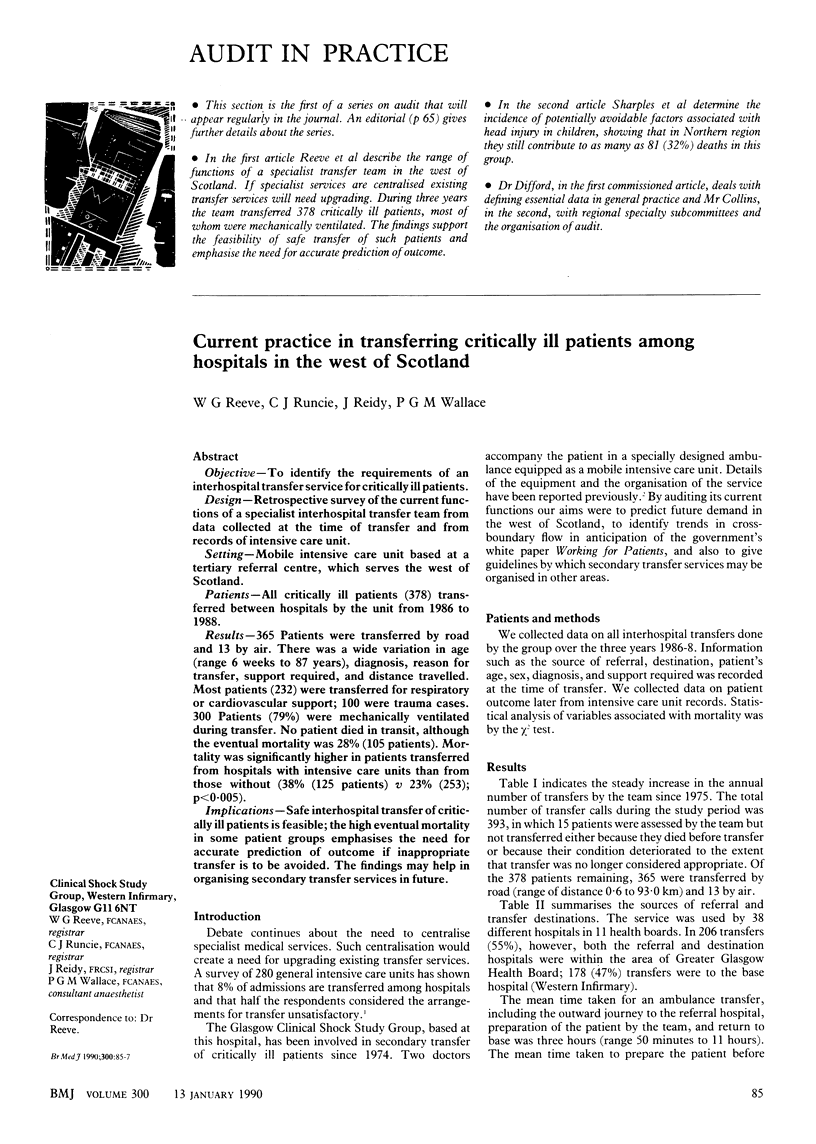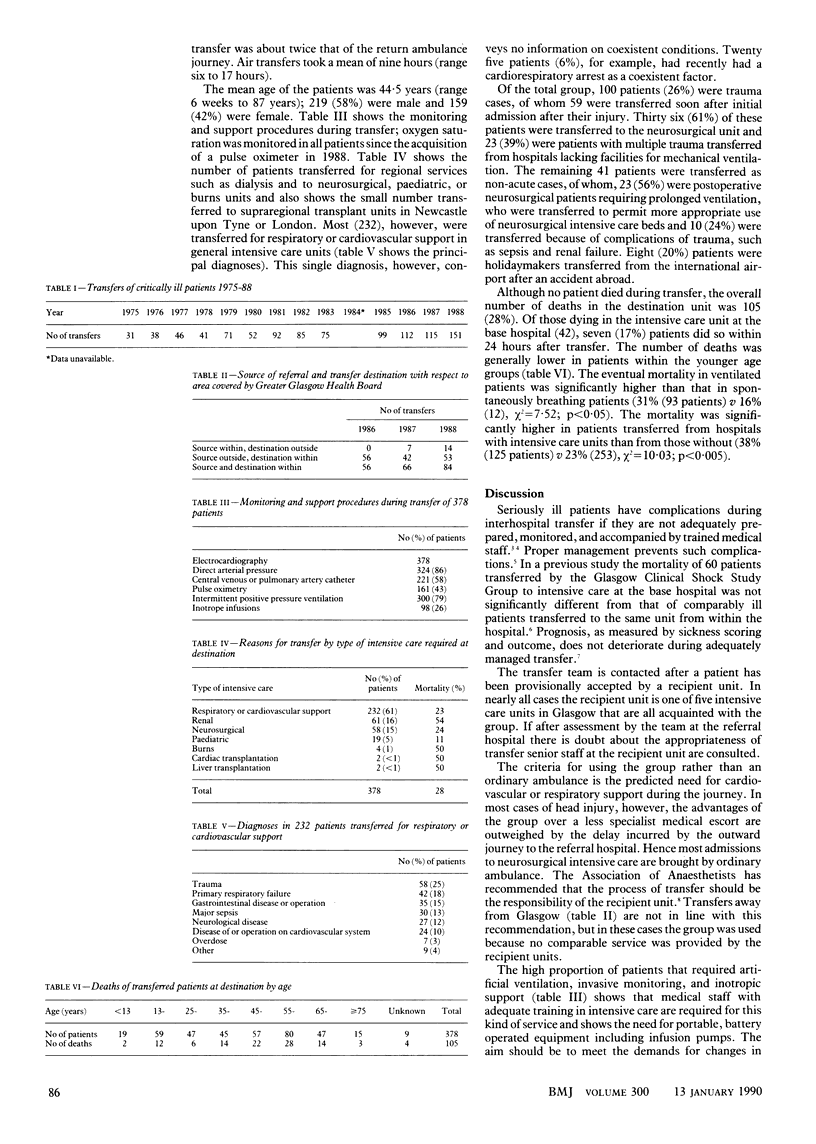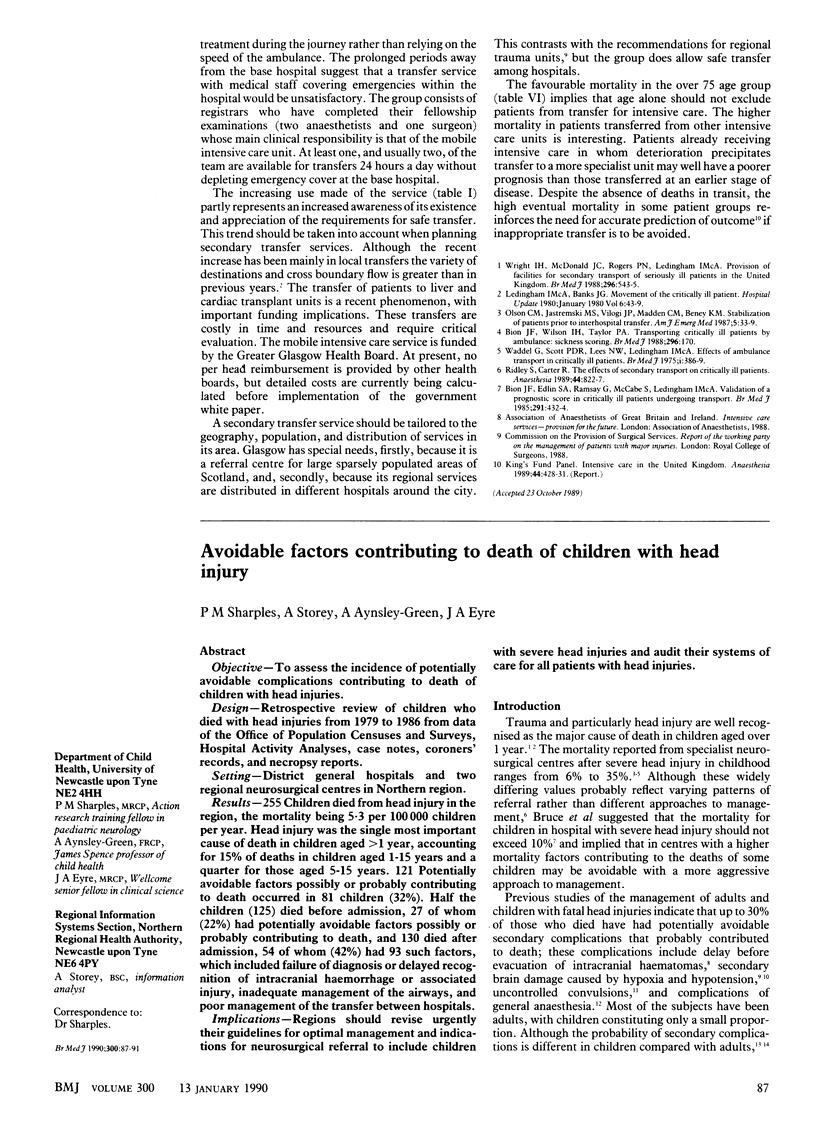Abstract
OBJECTIVE--To identify the requirements of an interhospital transfer service for critically ill patients. DESIGN--Retrospective survey of the current functions of a specialist interhospital transfer team from data collected at the time of transfer and from records of intensive care unit. SETTING--Mobile intensive care unit based at a tertiary referral centre, which serves the west of Scotland. PATIENTS--All critically ill patients (378) transferred between hospitals by the unit from 1986 to 1988. RESULTS--365 Patients were transferred by road and 13 by air. There was a wide variation in age (range 6 weeks to 87 years), diagnosis, reason for transfer, support required, and distance travelled. Most patients (232) were transferred for respiratory or cardiovascular support; 100 were trauma cases. 300 Patients (79%) were mechanically ventilated during transfer. No patient died in transit, although the eventual mortality was 28% (105 patients). Mortality was significantly higher in patients transferred from hospitals with intensive care units than from those without (38% (125 patients) v 23% (253); p less than 0.005). IMPLICATIONS--Safe interhospital transfer of critically ill patients is feasible; the high eventual mortality in some patient groups emphasises the need for accurate prediction of outcome if inappropriate transfer is to be avoided. The findings may help in organising secondary transfer services in future.
Full text
PDF


Selected References
These references are in PubMed. This may not be the complete list of references from this article.
- Bion J. F., Edlin S. A., Ramsay G., McCabe S., Ledingham I. M. Validation of a prognostic score in critically ill patients undergoing transport. Br Med J (Clin Res Ed) 1985 Aug 17;291(6493):432–434. doi: 10.1136/bmj.291.6493.432. [DOI] [PMC free article] [PubMed] [Google Scholar]
- Bion J. F., Wilson I. H., Taylor P. A. Transporting critically ill patients by ambulance: audit by sickness scoring. Br Med J (Clin Res Ed) 1988 Jan 16;296(6616):170–170. doi: 10.1136/bmj.296.6616.170. [DOI] [PMC free article] [PubMed] [Google Scholar]
- Olson C. M., Jastremski M. S., Vilogi J. P., Madden C. M., Beney K. M. Stabilization of patients prior to interhospital transfer. Am J Emerg Med. 1987 Jan;5(1):33–39. doi: 10.1016/0735-6757(87)90285-3. [DOI] [PubMed] [Google Scholar]
- Ridley S., Carter R. The effects of secondary transport on critically ill patients. Anaesthesia. 1989 Oct;44(10):822–827. doi: 10.1111/j.1365-2044.1989.tb09099.x. [DOI] [PubMed] [Google Scholar]
- Waddell G., Scott P. D., Lees N. W., Ledingham I. M. Effects of ambulance transport in critically ill patients. Br Med J. 1975 Feb 15;1(5954):386–389. doi: 10.1136/bmj.1.5954.386. [DOI] [PMC free article] [PubMed] [Google Scholar]
- Wright I. H., McDonald J. C., Rogers P. N., Ledingham I. M. Provision of facilities for secondary transport of seriously ill patients in the United Kingdom. Br Med J (Clin Res Ed) 1988 Feb 20;296(6621):543–545. doi: 10.1136/bmj.296.6621.543. [DOI] [PMC free article] [PubMed] [Google Scholar]


